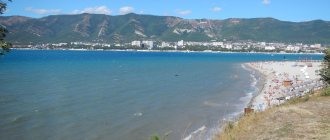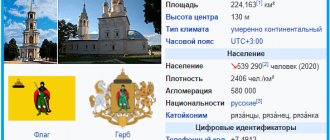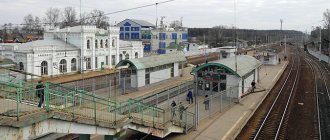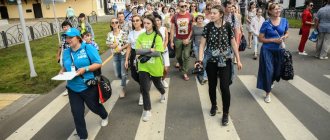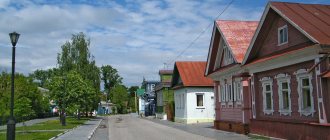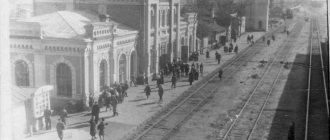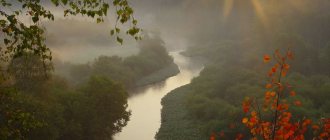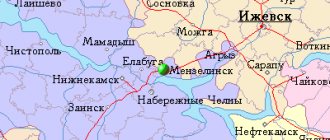Balaklava is a small picturesque city, located 15 km from Sevastopol and being its administrative part, located on the southwestern coast of Crimea. The city is located between high hills that hide the bay of the same name with the city, connected to the Black Sea. The name of the city translates as “fish bag” in Turkish or “fish weather” in Tatar. Thanks to the mountains and sea surrounding the city, the bay where Balaklava is located has a unique climate close to the subtropics. Balaklava is an amazing special place with sand or pebble beaches, good infrastructure and a favorable warm climate. Here you can enjoy the gentle sun and warm sea, and also learn a lot of interesting things by visiting the historical sights of this city. Balaklava is not only the beauty of nature and a rich history, but also a breathtaking modernity with restaurants, yacht clubs, hotels, cafes and other attributes of today. This southern resort invites tourists to have a bright, interesting, eventful holiday.
Holidays at different times of the year
First of all, Balaklava is a seaside resort; the tourist peak here occurs in July-August. The sea warms up to +25 °C, the air temperature reaches approximately +35 °C, and there is practically no rain. By mid-summer, all the fruits that Crimea is rich in are ripe. During this period, relaxing on the beach can be combined with exploring local attractions.
Tourist peak in Balaklava occurs in July and August
Rock music lovers will be interested in the fact that in early August, not far from Balaklava, a festival of the biker club “Night Wolves” takes place. And these are always exciting show programs with performances by famous rock bands.
Autumn in Balaklava is soft and warm, the velvet season lasts until mid-October. The air temperature at this time can remain at +25–27 °C (but not lower than +20 °C). In addition, the price of rental housing is decreasing, which is pleasantly pleasing.
As winter approaches, the city seems to freeze. Many restaurants and museums are closing. Although the air temperature here is not very low (slightly below zero), cold winds blow from the sea and it often rains. Winter Balaklava is a nondescript place, gray and uncomfortable.
In winter it is uncomfortable in Balaklava, it often rains and a cold wind blows from the sea, in addition, many establishments are not open
The beginning of spring in the resort town is cool, with warmth breaking through only in mid-April. In May, the thermometer may well rise to +35 °C, which for many serves as a signal for the beginning of the swimming season. However, the sea has not yet warmed up - the water temperature does not exceed +18 °C.
Is there something closer?
Also by boat or walking the distance along the Balaklava mountain trail, you can get to Blizhny Beach.
This beach is called Silver. I don’t know who is right and who is wrong, and without 0.7 Cabernet Kaczynski there is no way to figure it out.
It is equipped with canopies, changing cabins and toilets. Entertainment includes water rides and trampolines for children. For your convenience, sun loungers and umbrellas are available for rent. You can refresh yourself in a cafe right on the shore.
As you have already noticed, all the beaches along the coast, although they have infrastructure, are distinguished by their naturalness - mountains and rocks surround the beach here, and the coastal strip does not have a completely smooth surface.
Along with Vasily , this is the most popular and quite spacious beach of Balaklava. Its length is 400m and its width is acceptable. But keep in mind that in the summer the pebbles “can’t burn”, so everyone will lubricate themselves closer to the shore.
A regular boat simply buries its nose into the pebbles to disembark passengers here.
Somehow, in pre-storm weather, fate brought us to these lands.
It was very interesting to hear the captain’s encouraging shouts into the megaphone from the bridge to those passengers who were embarrassed to jump from the side of the “liner” to the shore while they were scraping the ship on the rocky bottom...
Group in Contact Serebryany Beach
Ideas for a short break
Of course, if a tourist comes to Balaklava for at least a week, then he can see all the sights of this locality: historical monuments and picturesque places of nature. However, sometimes people come to this town for just one day, then the following program can be offered:
- Go to Cape Fiolent, admire the beauty of nature, go down to Jasper Beach.
- Visit the submarine museum.
- Go to the ruins of the Chembalo fortress.
- Go to St. George's Monastery.
For a tourist planning to spend two or three days in Balaklava, it is best to rent a hotel room with a daily rate. You can devote one or two days to sightseeing, then enjoy the splendor of the local nature.
Forts South Balaclava and North Balaclava
In 1909-1910, on Balaklava heights 386 and 212, located east of the city, the construction of concrete fortifications began, which later became known as forts South Balaklava and North Balaklava. Construction was carried out on a grand scale: all interior spaces were electrified, bare concrete surfaces were lined with wild stone, and ventilation shaft covers were cast in bronze and decorated with vignettes.
In 1914, at the height of the First World War, it suddenly turned out that the Black Sea Fleet could ensure its dominance in the Black Sea even without fortifications, and all work was promptly curtailed. Southern Balaklava was then 90% ready, Northern - 80%.
In the 1920s, after the revolution, work on both forts continued, but they mainly related to the construction of roads, communications equipment and telephone communications. Subsequently, both fortifications took an active part in the defense of Sevastopol in 1941-1942. After World War II they were no longer needed and were abandoned.
Height 386, on which the South Balaklava fort is located, is also known as Mount Asceti.
At the time of construction, it was the southernmost and highest coastal fortification in Europe.
During the years of oblivion, everything that could be broken off and carried away turned out to be stolen throughout Balaklava and the surrounding villages. Even the stones used in the construction of the fort did not escape this fate.
Today the fortification is a ruin of bare concrete with crumbling ditches. Trees have already grown in some parts of it.
But despite everything, South Balaklava is a popular place among tourists: excursions are taken here all the way from Sevastopol. This is because the “Barrel of Death” is located here. I talked about it in detail last time: under the “loud” name there is a small observation point, in which, according to popular rumor, during the German occupation, the Nazis shot captured Red Army soldiers, then throwing their bodies from a three-hundred-meter height into the abyss.
The photo shows your disobedient servant on the concrete wall of the “Barrel of Death” (thanks to Sasha Nikulin for the photo).
From South Balaklava you can see the entrance to Balaklava Bay. The Chembalo fortress is clearly visible below, on the opposite bank from it is coastal battery No. 19, to the right of the latter are the stepped arches of the Psilerakh quarry. Since 1933, limestone has been mined there for use in steel production.
Over the years of operation of the quarry, Mount Psilerahi, which once existed in its place, completely disappeared, and then part of Mount Tavros. The result is obvious: on the one hand, the surrounding landscape has been disfigured, on the other, due to changes in the mountainous terrain, the microclimate of Balaklava Bay has changed, and now strong winds periodically blow into it.
If I had been to Chembalo and South Balaklava before, the existence of the North Balaklava fort came as a surprise to me. No, of course, I assumed that if there is a South Balaklava, then there must be a North Balaclava somewhere, but I couldn’t even think that there were fortifications preserved there too.
Fort North Balaklava is located at height 212, located away from the coast. Its ancient name is Mount Kefalo-Vrisi.
At the time construction stopped, the readiness of Northern Balaklava was lower than that of Southern Balaklava. Over the past hundred-plus years, absolutely nothing has changed: the safety of this fort today is also noticeably worse than its coastal counterpart.
In the past, a water supply was laid from a source located on the slope of Mount Kefalo-Vrisi to the Chembalo fortress. Its towers are clearly visible in the background in the following photo.
From the fortifications of Northern Balaklava you can see the inner bend of Balaklava Bay. On the right side of the photo you can see the same Psilerakh quarry, looking from this angle from behind the other slope of Mount Tavros.
To see the entire bay in its entirety, you need to move away from the fort. From this point, the entrance to the underground channel of the Object 825 GTS, located at the foot of Tavros, is visible.
How to get there
The easiest way to get to Balaklava is from Sevastopol. To do this, you need to take bus number 17 or minibuses 17, 20, 25, 26 and drive fifteen stops to the final stop “5th km of Balaklava Highway”. Then you need to transfer to bus No. 119, 33, 9 or minibuses 9, 94. There are also buses from Yalta and Alushta to Balaklava.
Cat on the embankment
Where to eat delicious food here?
It is not surprising that people come to a place with such a name not only for the amazing museums and other attractions. People come here to try the delicious Black Sea fish. Restaurants in Balaklava serve freshly prepared seafood, freshly caught from sea water. Walking along the picturesque shores, you can find many tempting restaurants offering to taste freshly fried mullet, eat crispy horse mackerel, aromatic red mullet, or treat yourself to a rich fisherman’s fish soup (also known as the famous Balaklava-style fish soup). You can also eat oysters here. It's really delicious!
Interesting! Experts say that the Crimean oyster has always been valued above the best French varieties for its sweetness and tenderness. This difference in taste was explained by the composition and properties of the Black Sea waters. Therefore, modern restaurateurs and oyster breeders are confident that along with the cultivated population of these delicious mollusks, their unique taste has also returned.
Useful tips
Most of the resort's souvenir shops are located on the Nazukin promenade. A tourist can buy a balaclava hat here - a symbol of the resort (during the Crimean War they were worn by English soldiers to protect against frost). There are no large shopping centers or branded boutiques in the city - shopping lovers should keep this in mind. But in Balaklava there are two signature stores of Inkerman’s Crimean wines.
As for the beaches, they are somewhat distant from the city center. For example, tourists are taken to Zolote by a boat departing from the embankment. Figs are suitable for lovers of tent camping. However, you need to take a supply of food here so as not to waste time traveling to the city every day (water can be taken from the source). The cleanest water is located in the Marble Beach area.
Inzhir beach in Balaclava attracts camping enthusiasts
You can find a wide variety of accommodation in Balaklava: both luxury hotels and inns, as well as budget options in the private sector.
Coastal battery No. 19
On a high cape, directly opposite the Chembalo fortress, a coastal artillery battery was erected in 1912-1916. During construction, she received the number 22.
The battery was successfully integrated into the mountainous terrain and was armed with rapid-firing 152-mm Kane cannons, capable of firing at a distance of up to sixteen kilometers. Due to its isolated location, the fortification was reinforced with a ditch, a rampart with barbettes and an anti-assault grille. The command block was located a short distance from the firing positions and was located on a natural rocky hill.
In 1930, the battery changed its number to 19.
Later, it was under him that she entered the defense of Sevastopol. In November 1941, battery fire destroyed one of the enemy marine battalions, and later the assault on Balaclava was thwarted. Local residents nicknamed the battery “Mama”, and the fascist command respectfully designated it as “Centaur-1”, throwing all their efforts into its destruction. The battery fell in early July 1942, killing most of its defenders.
After the collapse of the Soviet Union, the fortification, along with the rest of the military facilities of the Black Sea Fleet in Balaklava, was transferred to Ukraine. There was no money to support the suddenly inherited military legacy and the battery was mothballed. In 2002, they wanted to create a memorial complex on its territory, where one could immerse oneself in the life of artillerymen during the Second World War. Then the Ukrainian military flatly refused to transfer the battery to civilian use, justifying their refusal by the fact that it was a strategic facility important for the country’s defense capability. In fact, by that time the fortification had already been decommissioned for two years, and was slowly being cut up by the military for scrap metal.
These days, the battery area is abandoned and neglected. In its underground galleries - shit, in the most literal sense of the word. Here they are - the realities of our days: on TV we shout about the sanctity of the memory of the war, and when it comes down to it, we do not hesitate to shit on the concrete, covered in the blood of the defenders of Sevastopol...
From here there is another beautiful view of Balaklava.
On the left is Mount Tavros. The exit from the underground channel “Object 825 GTS” is clearly visible.
In the foreground is the Chembalo fortress, behind (at the top of the distant mountain) is the South Balaklava fort.
To give you an idea of where all the fortifications we visited are located, I have prepared a detailed map for you.
Boat fare
Regular sea cruises are organized from the central embankment to the most popular beaches. Starting from the summer season, they run at regular intervals - once every hour and a half.
Transportation begins somewhere around 8.00-8.30 and ends around 18.00-18.45. Although... in the absence of occupancy, they may miss the flight altogether. So don't count on them too much.
Price:
- to Blizhny – 100 rubles;
- on Zolotoy – 150 rubles;
- for Vasili – 100 rubles;
- to Yashmovy – 200 rubles.
Children under 7 years old - free, from 7 to 12 - half price. There are options for preferential categories of citizens.
boats of private carriers also carry at the same rates . They also run according to occupancy, but are more reliable than a regular flight (which, who would have thought, is also private).
Also, on any of the beaches of Fig or wherever you are drawn, you can book a private boat, or arrange a kayak excursion. The cost must be found out on the spot.
Something you've never seen!
The most amazing, colorful, fabulous beach has a telling name - Lost World . This is a nature reserve; you cannot camp here overnight and light fires. But during the daytime, come and enjoy.
It is located at the foot of Cape Ai-ya and is amazing with its unique natural picture. Jagged walls of rocks rise into the blue sky to a height of more than 500 meters, trees and bushes stubbornly climb to the tops, and the only way out is by water.
And if you get here on a deserted day, you can feel like a real Robinson. By the way, the small pebble beach is very clean, there is no garbage. The water is incredibly clear.
Vacationers get here by boat and kayak. There is no infrastructure here at all. God grant that the mobile phone catches the network))
Here is Shaitan
A small beach up to 20 meters long among wild stones is located immediately beyond the exit from the bay. It's easier to get here by boat. But if you want extreme sports and the opportunity to show off your mountaineering skills, then go on foot. Just not in flip flops and not with watermelon and melon.
There was once a rock staircase there, but today rumors of it are lost to history. But I saw a rope tied by someone here. So, at your own peril and risk, you can go down holding the rope.
You can get here by going around the Chembalo fortress. From the embankment this is the closest beach towards Cape Ai-ya.
Without leaving the center
The central or city beach is located at the end of the Nazukina promenade . It is a completely concrete area, a little over 50 m long, and the locals tease it - “Splash Pool”.
To plunge into the sea you will have to go down the stairs or take a running splash - as your age and mood allow.
In terms of amenities, in principle, everything is there - awnings and benches, sun lounger rentals, changing rooms, toilets. Nearby there are catering establishments and one of the popular restaurants in Balaklava, “The Fisherman’s Hut”.
Pros : liveliness, proximity to the center and retail outlets, free use.
Disadvantages - the water here is not clean, because there are water vehicles scurrying around very close by.
With a tent on Fig
Next comes the coast of the Inzhir tract . They say that among the coniferous relict plants on the slopes you can find the remains of a wonderful garden with this wonderful tree.
wild small beaches in the tract . They hide among rocks and stones, go around mountain ledges, scatter pebbles on a flat surface, that is, they are designed for a “wild” tourist who needs only this.
There is also a tent camp here, but those who like privacy stay away from even this option.
In general, each of the small beaches has its own name, let’s list it in order:
- Cable,
- Wandering,
- Figs,
- Komandirsky,
- Far Figs,
- At the nearest tooth,
- White beach.
Getting here on foot is problematic; it is better to use sea transport. But if you are going to stay here for several days, then prepare all the necessary supplies - it’s a long walk to get water.
By the coast or by sea
Another beach that can be accessed from the same Tavricheskaya embankment is Vasili. You just have to walk from the center for almost 1 hour, and then from the top point go down an incredibly steep and long staircase with wooden, creaky steps.
Of course, it is more comfortable to get here by kayak, or private and regular boats for 100 rubles per bow and a 10-15 minute sail. Last year it was forbidden to drive your car here, which, of course, caused a flurry of indignation among guests.
It got its name from its location in Vasileva Balka . The area here is very beautiful - rocky ledges and green hills frame the coast, and the sea has a special, azure hue.
The beach covering is not entirely comfortable, it consists of large pebbles and assorted stones, but there are always a lot of vacationers here . In the water there are also picturesque blocks on which crab families live and mussels grow.
The infrastructure here includes: sheds, changing rooms, toilets, cafes, rental of sun loungers and umbrellas. The territory is not too long, but wide.
Vacationers stay here overnight with tents and cook mussels over a fire.
Group in Contact of Vasili Beach
